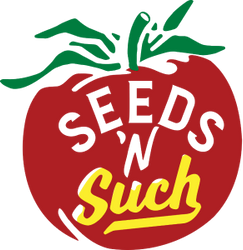
Reddest Cooking Carrot Ever—Is Also One of The Healthiest!
Be one of the first gardeners in your neighborhood to try the new ‘Nutri-Red’ carrot, which is the featured headliner in our premier Fall edition catalog, arriving in your mailbox in the next few weeks. ‘Nutri-Red’ is not only the reddest cooking carrot ever; it is also one of the healthiest.
As many “real food” enthusiasts know the heirloom and most nutritious carrots were not actually orange in color, but rather shades of red, blue, white and yellow. The Dutch actually decided to select for orange-colored carrots, because the color would be more appealing, so that’s why our markets are dominated by orange carrots today.
But the heirloom types are not only of different colors, they also contain greater concentrations of phytonutrients, making them much more nutritious. Nutritionists say cooked carrots are three times more nutritious than raw ones, and cooked whole carrots keep more nutrients than sliced ones. Roasting, sautéing, or steaming are preferred cooking methods, as boiling leaches out nutrients; and nutrition is also boosted even more when cooked carrots are served with some oil or fat too make the beta-carotene more soluble for our bodies to absorb. Following all these procedures can total up to eight times more beta-carotene than eating raw carrots.
Here’s our Fall catalog listing for ‘Nutri-Red’ (72 days): “Other red carrots exist, but none as deep a red when cooked as this new one from the same breeder as ‘Big Beef’ tomato! The bonus is its extraordinary health benefits, with its high levels of the antioxidant lycopene, a precursor of beta-carotene that is reportedly good in preventing several cancers, including prostate. Its roots 8 to 9-inches long, and taper from 1-1/2 inches at the top to a point at the bottom. Best variety for cooking, as it starts a reddish-pink when raw, before intensifying to its bright red color as it cooks. Through it all, it maintains its crispness.”
According to author Jo Robinson in Eating on the Wild Side, “Carrots, like most root crops, have a low respiration rate and can be stored for weeks without losing their food value. It’s best to keep them away from fruits and vegetables that can produce ethylene gas, however, that triggers the formation of bitter compounds.” Carrots are best stored in the refrigerator in a sealed plastic bag, or even overwinter in your garden, being careful to mark their location in the North so you’ll know where to dig for them under the snow.
